Q
What is the maintenance cost for a 2022 Honda City?
The maintenance costs for the 2022 Honda City in Malaysia mainly depend on regular service items and usage conditions. According to official recommendations, basic maintenance is required every 6 months or 10,000 kilometers, costing around RM200 to RM400. This includes oil and oil filter changes along with basic inspections. If replacements for consumables like the air filter or cabin air filter are needed, the cost might go up to around RM500. For the major service at every 40,000 kilometers, expect to pay between RM800 and RM1,200, which covers key items such as transmission fluid and brake fluid. It's worth noting that maintenance costs can vary slightly depending on the pricing or promotional activities of service centers in different areas. Car owners are advised to regularly check Honda Malaysia's official website or authorized service centers for the latest maintenance package information. Additionally, developing good driving habits and sticking to scheduled maintenance not only extends the vehicle's lifespan but also helps avoid high repair costs caused by ignoring minor issues. For example, regularly checking tire pressure and the brake system can effectively improve driving safety and reduce fuel consumption. For owners on a tight budget, considering Honda's maintenance packages is a good idea, as they usually come with certain discount benefits.
Special Disclaimer: This content is published by users and does not represent the views or position of PCauto.
Related Q&A
Q
What is the mileage of Honda City 2022?
The 2022 Honda City delivers impressive fuel efficiency in the Malaysian market. The 1.5L i-VTEC petrol engine variants (S/V trims) boast an official fuel consumption figure of 5.4 liters per 100 kilometers (18.5km/L), while the 1.5L e:HEV hybrid version (RS trim) achieves an astonishing 3.8 liters per 100 kilometers (26.3km/L). These figures are theoretical values based on the Malaysian standard test cycle (NEDC). In real-world driving, fuel consumption can be affected by factors such as road conditions, driving habits, and air conditioning usage, but the City range has always been known for its frugality. Its Earth Dreams technology enhances fuel efficiency through optimized combustion efficiency and lightweight design. It's worth noting that Malaysian consumers should prioritize models equipped with the ECO driving mode assist system when purchasing. This system can further reduce fuel consumption by adjusting throttle response and air conditioning output. Additionally, regular maintenance, such as timely replacement of spark plugs and air filters, is crucial for maintaining optimal fuel efficiency. The hybrid version, on the other hand, is more suitable for drivers who frequently encounter urban traffic congestion, as its intelligent multi-mode drive system automatically switches between electric and engine power to maximize energy savings.
Q
How much is Honda City 2022 in the Philippines?
The 2022 Honda City's pricing in the Philippine market varies by trim level. The base 1.5 S MT starts at around 749,000 Philippine pesos (approximately 63,000 Malaysian ringgit), while the top-spec 1.5 RS CVT goes for about 1,116,000 Philippine pesos (roughly 94,000 Malaysian ringgit). Actual prices may fluctuate slightly depending on dealer promotions or optional extras.
Under the hood, this model packs a 1.5-liter i-VTEC engine, churning out 121 horsepower and 145 Nm of torque. Honda SENSING comes standard across the range. It's worth noting that the Philippine-spec City differs from its Malaysian counterpart in terms of equipment. For instance, the Malaysian version offers a wider selection of exterior colors and a suspension setup tuned for local roads.
For Malaysian consumers considering a cross-border purchase, it's crucial to be aware of the differences in vehicle certification standards between the two countries. This includes right-hand drive compliance, cross-border warranty applicability, and import duties. It's strongly recommended to check with Honda Malaysia's official channels first for details on locally-spec'd models to ensure comprehensive after-sales support.
Q
How big is the trunk of the Honda City 2020?
The 2020 Honda City offers a generous 536 liters of trunk space, which is pretty roomy for its class. It can easily swallow three large suitcases or your weekly grocery haul, making it a solid pick for families or road trips. The wide trunk opening is a nice touch too, making it easier to load and unload bulkier items. And if you need more room, the rear seats split 60:40 and fold down, giving you even more versatility for hauling bigger stuff. For Malaysian drivers, this kind of cargo capacity should handle most daily needs with ease—whether it's a weekend getaway or packing up for a holiday trip back home.
Honda's always been good at squeezing the most out of interior space, and the 2020 City is no exception. It keeps a compact footprint but smartly uses the available room, striking a nice balance between passenger comfort and storage. If you regularly find yourself needing to carry even more gear, throwing on a roof box or using trunk organizers can help boost that storage even further. Little tricks like these go a long way in making your daily drive that much more convenient.
Q
What is the safety rating of Honda City 2020?
The 2020 Honda City really shines when it comes to safety, nabbing a 5-star rating from ASEAN NCAP. That top score is a solid nod to its all-around performance in adult occupant protection, child occupant protection, and safety assist technologies. This ride comes loaded with a suite of active and passive safety kit: think 6 airbags, Vehicle Stability Control (VSC), Anti-lock Braking System (ABS), and Electronic Brake-force Distribution (EBD) – all working together to keep drivers and passengers out of harm's way.
But Honda didn't stop there. The 2020 City also gets the Honda Sensing suite of smart safety features. We're talking Collision Mitigation Braking System (CMBS), Lane Keeping Assist System (LKAS), and Adaptive Cruise Control (ACC) – some pretty advanced tech that takes on-road safety up another notch.
For Malaysian buyers, picking a car with a strong safety rating isn't just a nice-to-have; it's a big deal. Let's face it, our roads can be pretty chaotic, so having those extra safety features can seriously help cut down on accident risks. Getting clued up on a car's safety ratings and specs isn't just about making a smarter purchase – it's also a reminder to stay sharp behind the wheel, no matter what. Safe driving, everyone.
Q
How many airbags does the Honda City 2020 have?
The 2020 Honda City in Malaysia came with varying airbag counts depending on the trim level. The base S variant started with a standard 4 airbags (front dual airbags plus side airbags), while the higher-spec V, E, and Hybrid trims upped the ante to 6 airbags, adding front and rear side curtain airbags. This tiered approach is a common strategy to balance safety features with price points across the range.
But airbags are just one piece of the passive safety puzzle. Importantly, every 2020 City came standard with active safety tech like Vehicle Stability Assist (VSA), Anti-lock Braking System (ABS), and Hill Start Assist. These work hand-in-hand with the airbags to provide a more comprehensive safety net for occupants.
For Malaysian shoppers, especially those looking at used models or comparing rivals, it's wise to look beyond just airbag numbers. The 2020 City scored a 5-star ASEAN NCAP safety rating, which is a solid benchmark, but also factor in the vehicle's service history. Airbag systems rely on regular maintenance and properly functioning crash sensors to work when needed. And it's always a good move to check with an authorized dealer to confirm the exact specs of the specific model you're eyeing – sometimes special editions or late-run minor updates might tweak safety equipment levels.
Q
How is the ride quality of the Honda City 2020?
The 2020 Honda City strikes a solid balance when it comes to ride comfort. Its suspension is tuned with daily family use in mind, doing a good job of ironing out those common Malaysian road imperfections – things like asphalt seams or minor bumps – while still keeping you connected enough to the road to feel confident behind the wheel. The seats use ergonomic foam padding, so you won't get all achy even on longer drives. NVH levels are above average for the class too; below 80km/h, wind and tire noise are nicely kept in check, making it a solid pick for city commuting and family hauling. If you're after an even plusher ride, the 16-inch wheel option (over the base 15s) is worth considering – the taller sidewalls on those tires soak up bumps even better. It's worth noting that the suspension does lean a bit more during high-speed cornering, which is pretty typical for a comfort-focused car. I'd definitely recommend test-driving it to see how it fits your usual driving style. In the same segment, its comfort vibe goes head-to-head with the Toyota Vios – the Vios is a touch softer, while the City offers better body control. Look, at the end of the day, these B-segment sedans can't match a luxury D-segment car, but the 2020 City has stepped up its game over the previous generation. Thanks to tweaks in the rear suspension geometry and increased body rigidity, Honda says it's absorbing bumps about 15% more effectively now.
Q
How much horsepower does a 2020 Honda City have?
The 2020 Honda City hits the Malaysian market with two engine choices. The 1.5L i-VTEC naturally aspirated mill cranks out 121 horsepower and 145 Nm of torque, while the 1.5L Earth Dreams turbo diesel option delivers 100 horsepower and a meaty 200 Nm of torque. This car has won over Malaysian buyers thanks to its fuel efficiency and solid reliability, making it a top pick for city commutes and family duties alike.
Horsepower is a key measure of engine performance, directly impacting a car's acceleration and top speed, but real-world driving feel also hinges on factors like transmission tuning, vehicle weight, and aerodynamic design. The City's success locally also boils down to its well-rounded performance and the strong reputation Honda has built up in Malaysia over the years. For shoppers on a budget who still want quality, it's a pretty solid bet.
Q
What is the fuel economy of the Honda City 2020?
The 2020 Honda City demonstrates excellent fuel efficiency in the Malaysian market. The variant equipped with the 1.5L i-VTEC petrol engine and CVT transmission has an official combined fuel consumption of 5.4 L/100km (approximately 18.5 km/L). The hybrid e:HEV variant is designed for even higher efficiency, though its specific fuel consumption figure should be verified with official sources or latest reviews, as the widely cited 3.4 L/100km (approximately 29.4 km/L) lacks direct support in the provided search results and may not reflect real-world conditions in Malaysia. Both powertrains closely align with the demands of Malaysian consumers who prioritize fuel economy. Actual fuel consumption may vary depending on factors such as driving habits, road conditions, and vehicle load. Therefore, adhering to a regular maintenance schedule is crucial for maintaining optimal fuel efficiency.
Given Malaysia's hot and humid climate, judicious use of the air conditioning system and maintaining the recommended tire pressure can contribute significantly to improving fuel economy. As a top-selling model in the B-segment sedan market in Malaysia, the Honda City's fuel efficiency remains competitive against its peers, making it a practical choice for daily commuting and family use. The e:HEV hybrid version, in particular, presents a compelling option for environmentally conscious drivers seeking to minimize long-term running costs, pending verification of its specific fuel economy claims.
Q
How safe is the Honda City 2020?
The 2020 Honda City holds its own when it comes to safety, packing in 6 airbags, Vehicle Stability Assist (VSA), Anti-lock Braking System (ABS), and Electronic Brake-force Distribution (EBD). That's a pretty solid setup for the class, and it should do a good job of keeping you protected during those daily drives around Malaysia. Honda's ACE Body Structure is also on board here, which is designed to effectively disperse crash energy and boost occupant safety in the event of a collision. It's worth highlighting that the 2020 City scored a 5-star rating in ASEAN NCAP crash tests, which is a solid stamp of approval for its safety credentials. For Malaysian buyers, picking this car means you're not just getting Honda's usual reputation for reliability, but also a decent level of safety kit. If safety is a top priority for you, it's definitely worth checking out the specific safety features when you're looking to buy – things like whether it comes with Honda Sensing. That suite includes handy advanced features like Adaptive Cruise Control and Lane Keeping Assist, which can go a long way in making your drives even safer.
Q
What is the top speed of Honda City 2020?
The 2020 Honda City maxes out at around 190 km/h, which is the top speed you can squeeze out of its 1.5-liter i-VTEC naturally aspirated engine under ideal conditions. Of course, in the real world, you might see a slight difference depending on road conditions, how much you're carrying, or the weather. This car is pretty popular in the Malaysian market, and it's not just because of its solid performance—it's also about that fuel efficiency and nimble handling that makes city driving a breeze. The CVT gearbox in the City does a good job smoothing out power delivery, so acceleration feels seamless and efficient, whether you're commuting daily or hitting the highway for a longer drive. For Malaysian buyers, beyond just top speed, overall performance and maintenance costs matter a lot, and the City delivers here too. Its low trouble rate and wide service network make life easier for owners. If you're craving a bit more zip, there's always the Honda City RS variant. It gets some tweaks to the engine tuning and sportier bits, but don't expect a huge jump in top speed—these cars are all about balancing practicality with a bit of driving fun, after all.
Latest Q&A
Q
Does the 2020 Honda Accord have transmission problems?
The 2020 Honda Accord has performed well overall in the Malaysian market. Its CVT and 10-speed automatic transmissions (depending on the trim) are technically mature, with most owners reporting smooth and reliable operation. However, some isolated cases may experience slight low-speed hesitation or delayed shifting, which are common characteristics of CVT transmissions rather than malfunctions. Honda Malaysia has not issued any large scale recalls or technical bulletins for this model regarding the transmission. It is recommended to check the transmission fluid condition during regular maintenance to ensure optimal performance. For consumers considering a used 2020 Accord, it is advisable to conduct a pre-purchase inspection through an authorized Honda service center, focusing on reading transmission fault codes and historical data. Notably, while CVT transmissions are known for their fuel efficiency, driving style can affect their lifespan. It is recommended to avoid frequent hard acceleration to extend component longevity. If unusual shifting vibrations or warning lights appear, contact an authorized Honda service point promptly for professional diagnosis. All Honda service centers in Malaysia are equipped with dedicated diagnostic equipment to quickly identify issues.
Q
What year to avoid Accord?
In Malaysia, the Honda Accord is a popular mid-size sedan, but certain model years can have some common issues that buyers should watch out for when shopping around. Based on owner feedback and expert reviews, some 2013 and 2014 Accord models had problems with transmission jerking and electronic system glitches, especially the CVT-equipped versions, which might develop rough shifting after long-term use. Additionally, owners of 2008 to 2010 Accords have reported higher fuel consumption and suspension noises. While these don't affect driving safety, they could increase long-term maintenance costs. If you're buying a used Accord, it's better to prioritize models from 2015 onwards—they saw significant improvements in reliability and fuel efficiency. Malaysia's hot and humid climate means you should also pay extra attention to the car's air conditioning system and electrical wiring when checking it out. Regular maintenance can really help extend the vehicle's lifespan. If your budget allows, the new Accord's hybrid system performs better in terms of fuel savings and driving experience, making it a good fit for buyers who value eco-friendliness and comfort.
Q
Which is better, the 2019 or the 2020 Honda Accord?
Both the 2019 and 2020 Honda Accord are really popular mid-size sedans in the Malaysian market. They don't differ much in core specs, but the 2020 model gets some nice detail upgrades. On the outside, the 2020 Accord has subtle tweaks to the front grille and wheel designs, giving it a more modern look, plus there are new exterior color options. Inside, the 2020 version comes standard with an 8-inch infotainment screen and an upgraded Honda Sensing safety suite, including more responsive adaptive cruise control and lane-keeping assist – features that were optional on some 2019 trims. Under the hood, both models offer the 1.5T turbo engine or the 2.0L hybrid system, with similar fuel economy, but the 2020's CVT transmission feels smoother in its tuning. For Malaysian buyers, if your budget allows, the 2020's upgraded features are worth considering, especially the improved safety tech which is really handy for daily driving. It's worth noting that 2019 models might offer better value in the used car market, but make sure to check the service records carefully if you go that route. The Honda Accord is known in Malaysia for its reliability and low maintenance costs, so both model years are solid picks – it just comes down to your budget and how much you want the newer features.
Q
Which year of Accord is most reliable?
In the Malaysian market, the Honda Accord is a favorite among consumers for its reliability and durability, especially the ninth-generation models produced from 2013 to 2017, which deliver an outstanding overall performance. This generation comes with an optimized 2.4-liter naturally aspirated engine or a 3.5-liter V6, offering smooth power delivery and decent fuel efficiency. It's paired with either a CVT or 6-speed automatic transmission—both mature technologies with low failure rates. Additionally, the ninth-gen Accord features a solid body structure and a well-tuned chassis that balances comfort and handling, making it suitable for Malaysia's diverse road conditions. If your budget is tight, the eighth-generation Accord (2008–2012) is also a solid pick, though keep in mind that some high-mileage used units may have issues like worn steering gears or suspension bushings. When shopping for a used Accord, prioritize checking regular maintenance records and pay close attention to the upkeep of critical components like transmission fluid and timing chains. As for hybrid versions, the i-MMD system in the tenth-generation Accord (2018 onwards) performs reliably, but battery life will gradually decline with years of use—professional testing is recommended before purchase. Overall, the Accord ranks among the most reliable in its class, and with proper maintenance, it can stay in great shape for the long haul.
Q
How long will a 2020 Accord last?
The 2020 Honda Accord can typically clock 200,000 to 300,000 kilometers or more with regular maintenance and proper use. Its actual lifespan depends on the owner's driving habits, how often it's serviced, as well as road conditions and climate in Malaysia. Under the hood, it’s packing Honda’s reliable Earth Dreams engine paired with a CVT transmission—proven tech with solid durability. Sticking to regular oil changes, transmission fluid replacements, and maintaining key components like the brakes and suspension can seriously extend its road life. Malaysia’s hot and humid weather might take a toll on rubber parts (think belts and seals) and the battery, so it’s a good idea to check these every six months and opt for original or high-quality replacement parts. Also, the Accord holds its value pretty well in Malaysia’s used car market, and a solid service history can bump up its resale price even more. For long-term ownership, follow the official maintenance manual and head to authorized Honda service centers for upkeep—you’ll get professional technical support and genuine parts that way. If you’re planning to keep it for the long haul, consider periodic deep maintenance too, like fuel system cleaning and coolant replacement, to keep the car in top shape.
View MoreRelated News
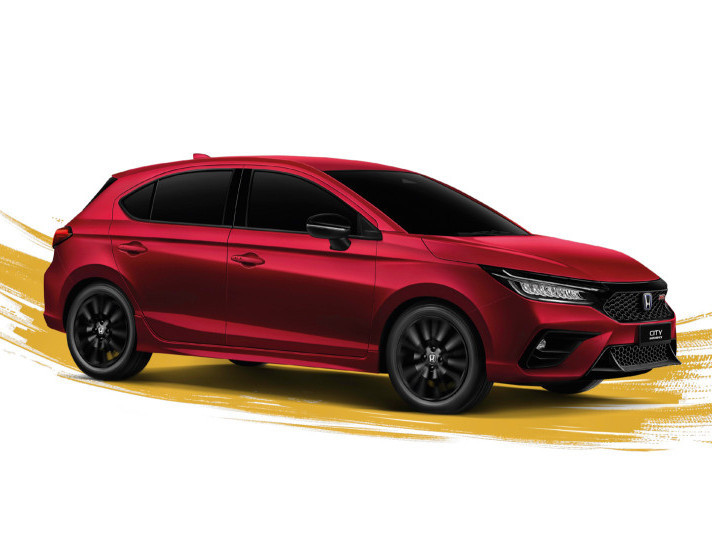
Honda City Hatchback Interior: Surprising Space Inside a Compact Body
WilliamJul 16, 2025
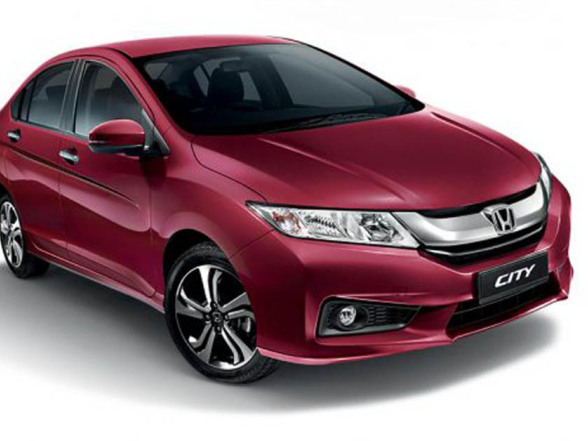
Should You Buy a Used Honda City GM6? – Get Idea Here!
RobertJun 23, 2025
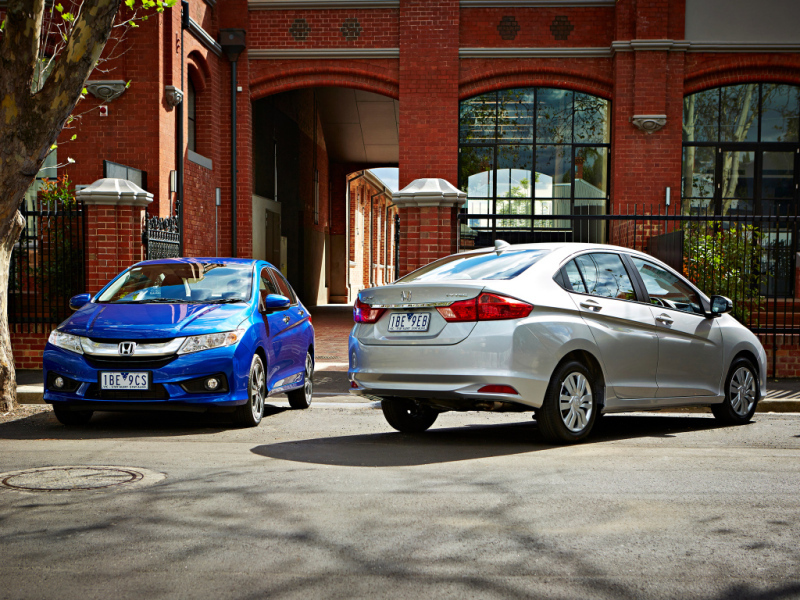
Is it worth buying a used Honda City GM7?
LienMar 7, 2025
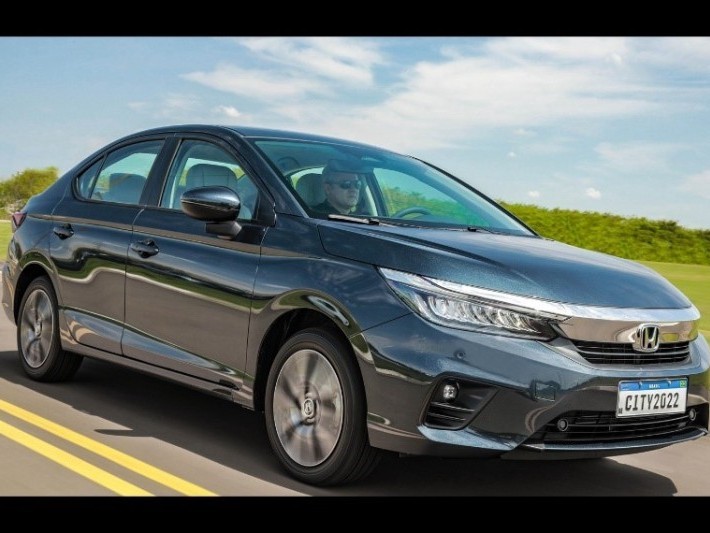
Limited to 99 units! Honda City SE Special Edition goes on sale, accused of clearing inventory?
LienSep 27, 2024
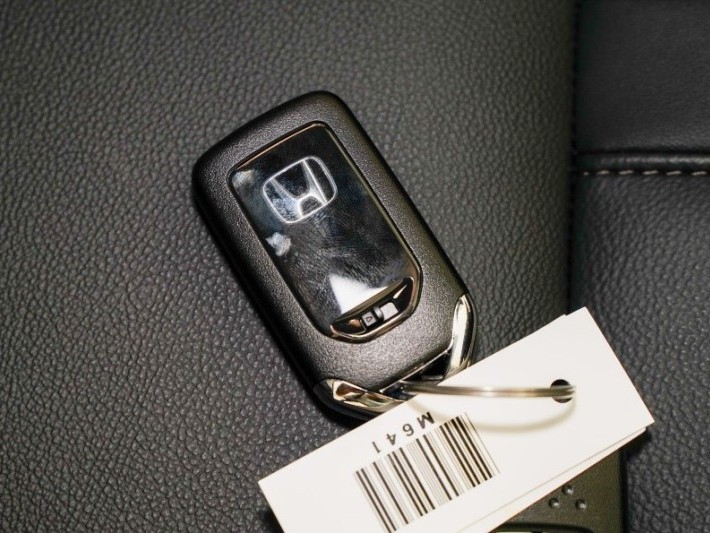
The cost of using Honda City revealed: How much does it actually cost to use for 5 years?
Kevin WongSep 19, 2024
View More












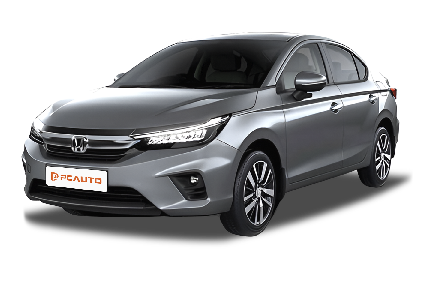
 Cars
Cars




Pros
Cons